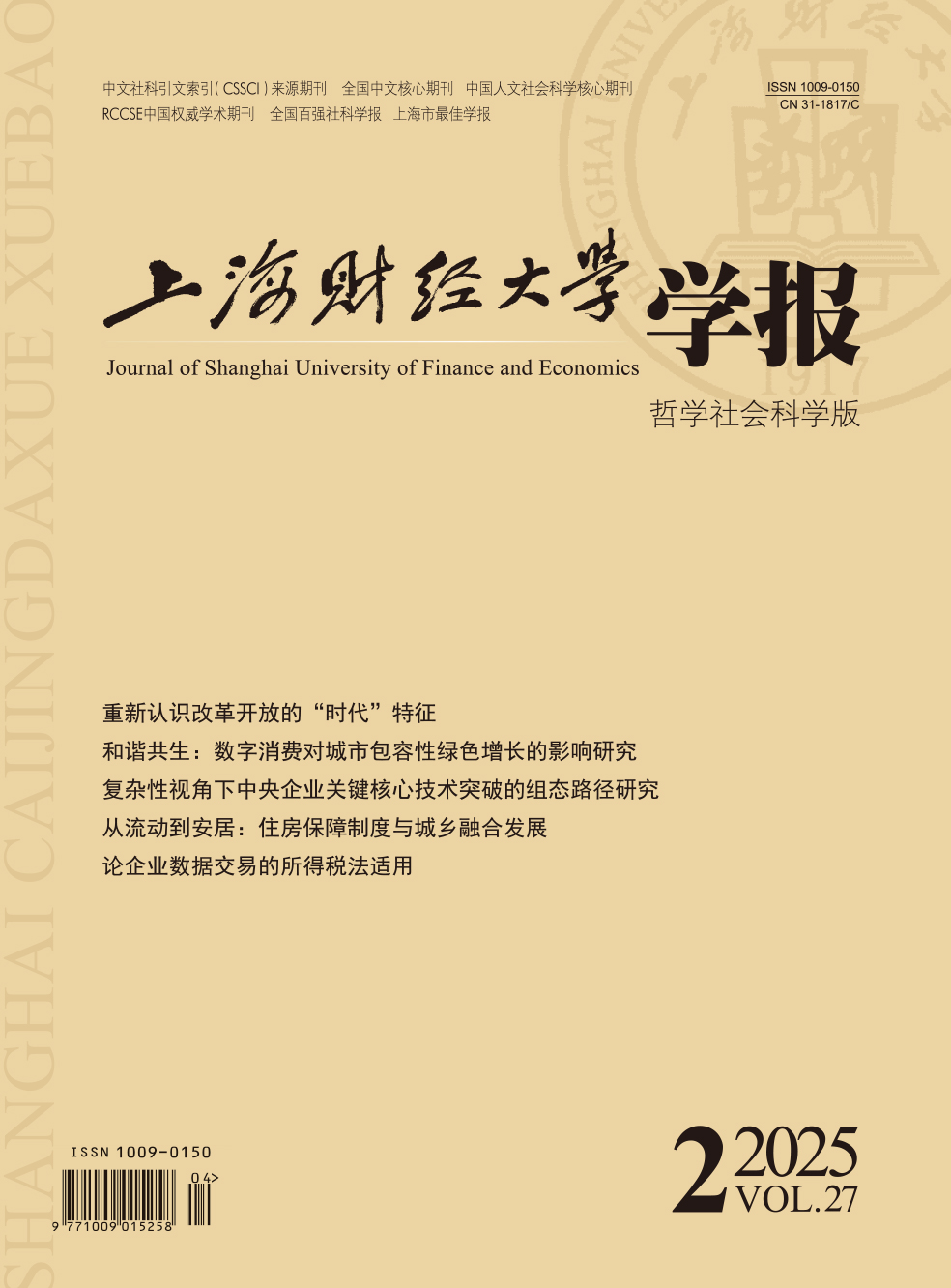基于2011-2017年中国A股上市公司数据,文章以海外经历作为高管文化特征的代理,从文化视角探索公司高管团队海外背景对企业创新的影响。研究发现,海归高管显著促进了企业创新投入。受组织异质情境影响,当企业财务冗余水平和高管持股比例越高时,海归高管的创新促进效应越明显。作用机制检验表明,海归高管通过提升高管团队风险偏好和自信度促进创新投入。进一步研究表明,海归高管通过促进创新投入提升了发明专利申请量。此外,与海外工作经历相比留学经历更能促进企业创新,同时具备两种经历的高管对企业创新的作用则明显大于仅拥有单一海外经历的高管。文章从文化趋同视角拓展了对海归高管创新决策内在逻辑及其作用边界的理解,丰富了高管早期经历主题研究文献,也为合理评估国家公派留学、高端引智等政策的实际效果提供了微观企业层面的经验证据。
海归高管与企业创新:基于文化趋同的视角
摘要
参考文献
1 龚光明, 曾照存. 公司特有风险、管理者风险特质与企业投资效率——来自中国上市公司的经验数据[J]. 经济与管理研究, 2013, (11).
2 胡国柳, 赵阳, 胡珺. D&O保险、风险容忍与企业自主创新[J]. 管理世界, 2019, (8).
3 黄希庭, 尹天子. 从自尊的文化差异说起[J]. 心理科学, 2012, (1).
4 姜付秀, 张敏, 陆正飞, 等. 管理者过度自信、企业扩张与财务困境[J]. 经济研究, 2009, (1).
5 解维敏, 魏化倩. 市场竞争、组织冗余与企业研发投入[J]. 中国软科学, 2016, (8).
6 金智, 徐慧, 马永强. 儒家文化与公司风险承担[J]. 世界经济, 2017, (11).
7 李常青, 李宇坤, 李茂良. 控股股东股权质押与企业创新投入[J]. 金融研究, 2018, (7).
8 李晓翔, 刘春林. 高流动性冗余资源还是低流动性冗余资源——一项关于组织冗余结构的经验研究[J]. 中国工业经济, 2010, (7).
9 连燕玲, 叶文平, 刘依琳. 行业竞争期望与组织战略背离——基于中国制造业上市公司的经验分析[J]. 管理世界, 2019, (8).
10 刘凤朝, 默佳鑫, 马荣康. 高管团队海外背景对企业创新绩效的影响研究[J]. 管理评论, 2017, (7).
11 柳光强, 孔高文. 高管海外经历是否提升了薪酬差距[J]. 管理世界, 2018, (8).
12 罗思平, 于永达. 技术转移、“海归”与企业技术创新——基于中国光伏产业的实证研究[J]. 管理世界, 2012, (11).
13 潘越, 肖金利, 戴亦一. 文化多样性与企业创新: 基于方言视角的研究[J]. 金融研究, 2017, (10).
14 田轩, 孟清扬. 股权激励计划能促进企业创新吗[J]. 南开管理评论, 2018, (3).
15 王栋, 吴德胜. 股权激励与风险承担——来自中国上市公司的证据[J]. 南开管理评论, 2016, (3).
16 汪新建, 张慧娟, 武迪, 等. 文化对个体风险感知的影响: 文化认知理论的解释[J]. 心理科学进展, 2017, (8).
17 吴建祖, 龚敏. 基于注意力基础观的CEO自恋对企业战略变革影响机制研究[J]. 管理学报, 2018, (11).
18 杨林, 段牡钰, 刘娟, 等. 高管团队海外经验、研发投入强度与企业创新绩效[J]. 科研管理, 2018, (6).
19 杨卓尔, 高山行, 江旭. 原始创新的资源基础及其对企业竞争力的影响研究[J]. 管理评论, 2014, (7).
20 易靖韬, 张修平, 王化成. 企业异质性、高管过度自信与企业创新绩效[J]. 南开管理评论, 2015, (6).
21 张鹏程, 刘文兴, 廖建桥. 魅力型领导对员工创造力的影响机制: 仅有心理安全足够吗?[J]. 管理世界, 2011, (10).
22 张铁铸. 管理层风险特质、会计选择与盈余质量研究[J]. 山西财经大学学报, 2010, (9).
23 赵龙凯, 江嘉骏, 余音. 文化、制度与合资企业盈余管理[J]. 金融研究, 2016, (5).
24 Armstrong C S, Vashishtha R. Executive stock options, differential risk-taking incentives, and firm value[J]. Journal of Financial Economics,2012,104(1):70–88. DOI:10.1016/j.jfineco.2011.11.005
25 Audia P G, Greve H R. Less likely to fail: Low performance, firm size, and factory expansion in the shipbuilding industry[J]. Management Science,2006,52(1):83–94. DOI:10.1287/mnsc.1050.0446
26 Barker V L, Mueller G C. CEO characteristics and firm R&D spending[J]. Management Science,2002,48(6):782–801. DOI:10.1287/mnsc.48.6.782.187
27 Bentley F S, Kehoe R R. Give them some slack—They’re trying to change! The benefits of excess cash, excess employees, and increased human capital in the strategic change context[J]. Academy of Management Journal,2020,63(1):181–204. DOI:10.5465/amj.2018.0272
28 Bochner S, Hesketh B. Power distance, individualism/collectivism, and job-related attitudes in a culturally diverse work group[J]. Journal of Cross-Cultural Psychology,1994,25(2):233–257. DOI:10.1177/0022022194252005
29 Bradley S W, Shepherd D A, Wiklund J. The importance of slack for new organizations facing ‘tough’ environments[J]. Journal of Management Studies, 2011, 48(5): 1071-1097.
30 Brewer M B, Chen Y R. Where (who) are collectives in collectivism? Toward conceptual clarification of individualism and collectivism[J]. Psychological Review,2007,114(1):133–151. DOI:10.1037/0033-295X.114.1.133
31 Brown R, Sarma N. CEO overconfidence, CEO dominance and corporate acquisitions[J]. Journal of Economics and Business,2007,59(5):358–379. DOI:10.1016/j.jeconbus.2007.04.002
32 Cheng J L C, Kesner I F. Organizational slack and response to environmental shifts: The impact of resource allocation patterns[J]. Journal of Management,1997,23(1):1–18. DOI:10.1177/014920639702300101
33 Coles J L, Daniel N D, Naveen L. Managerial incentives and risk-taking[J]. Journal of Financial Economics,2006,79(2):431–468. DOI:10.1016/j.jfineco.2004.09.004
34 Dickinson V. Cash flow patterns as a proxy for firm life cycle[J]. The Accounting Review,2011,86(6):1969–1994. DOI:10.2308/accr-10130
35 Ederer F, Manso G. Is pay for performance detrimental to innovation?[J]. Management Science,2013,59(7):1496–1513. DOI:10.1287/mnsc.1120.1683
36 Filatotchev I, Liu X, Lu J, et al. Knowledge spillovers through human mobility across National borders: Evidence from Zhongguancun science park in China[J]. Research Policy,2011,40(3):453–462. DOI:10.1016/j.respol.2011.01.003
37 Gelfand M J, Nishii L H, Raver J L. On the nature and importance of cultural tightness-looseness[J]. Journal of Applied Psychology,2006,91(6):1225–1244. DOI:10.1037/0021-9010.91.6.1225
38 Greve H R. A behavioral theory of R&D expenditures and innovations: Evidence from shipbuilding[J]. Academy of Management Journal,2003,46(6):685–702.
39 Gruber M. Exploring the origins of organizational paths: Empirical evidence from newly founded firms[J]. Journal of Management,2010,36(5):1143–1167. DOI:10.1177/0149206309341083
40 Hambrick D C, Snow C C. A contextual model of strategic decision making in organizations[C]. Academy of Management Proceedings, 1977.
41 Hayward M L A, Hambrick D C. Explaining the premiums paid for large acquisitions: Evidence of CEO hubris[J]. Administrative Science Quarterly,1997,42(1):103–127. DOI:10.2307/2393810
42 Hofstede G. Culture’s consequences: International differences in work-related values[M]. Newbury Park, CA: Sage, 1980.
43 Hofstede G. The interaction between national and organizational value systems[J]. Journal of Management Studies,1985,22(4):347–357. DOI:10.1111/j.1467-6486.1985.tb00001.x
44 Hirshleifer D, Low A, Teoh S H. Are overconfident CEOs better innovators?[J]. Journal of Finance,2012,67(4):1457–1498. DOI:10.1111/j.1540-6261.2012.01753.x
45 Kasof J, Chen C, Himsel A, et al. Values and creativity[J]. Creativity Research Journal,2007,19(2–3):105–122. DOI:10.1080/10400410701397164
46 Kim K H. Exploring the interactions between Asian culture(Confucianism) and creativity[J]. Journal of Creative Behavior,2007,41(1):28–53. DOI:10.1002/j.2162-6057.2007.tb01280.x
47 Li K, Griffin D, Yue H, et al. How does culture influence corporate risk-taking?[J]. Journal of Corporate Finance,2013,23:1–22. DOI:10.1016/j.jcorpfin.2013.07.008
48 Manso G. Motivating innovation[J]. The Journal of Finance,2011,66(5):1823–1860. DOI:10.1111/j.1540-6261.2011.01688.x
49 Ng A K. Why Asians are less creative than Westerners[M]. Singapore: Prentice Hall, 2001.
50 Nohria N, Gulati R. Is slack good or bad for innovation?[J]. Academy of Management Journal,1996,39(5):1245–1264. DOI:10.2307/256998
51 Shalley C E, Zhou J, Oldman G R. The effects of personal and contextual characteristics on creativity: Where should we go from here?[J]. Journal of Management,2004,30(6):933–958. DOI:10.1016/j.jm.2004.06.007
引用本文
淦未宇, 刘曼. 海归高管与企业创新:基于文化趋同的视角[J]. 上海财经大学学报, 2022, 24(1): 92-106.
导出参考文献,格式为:





 4878
4878  4197
4197

